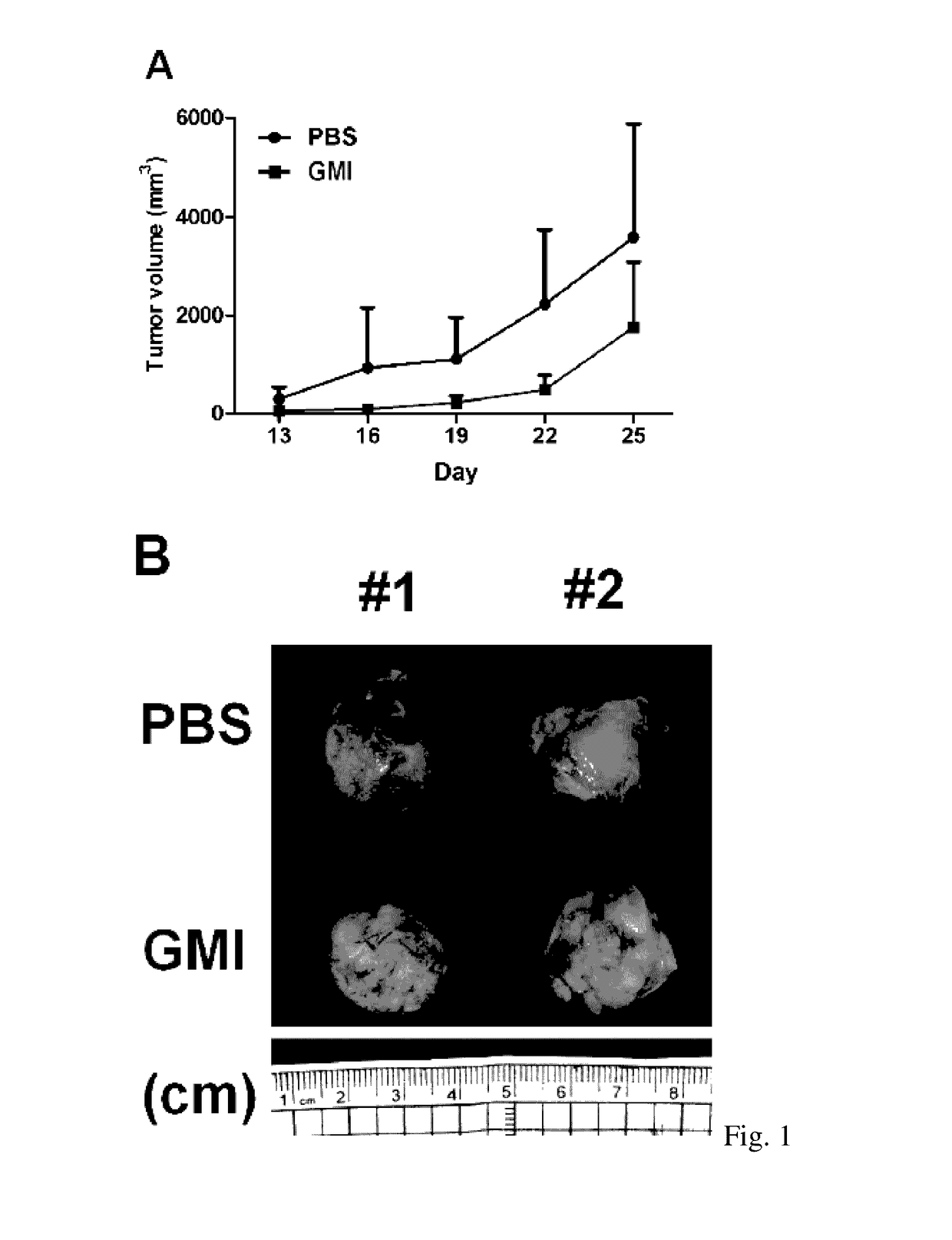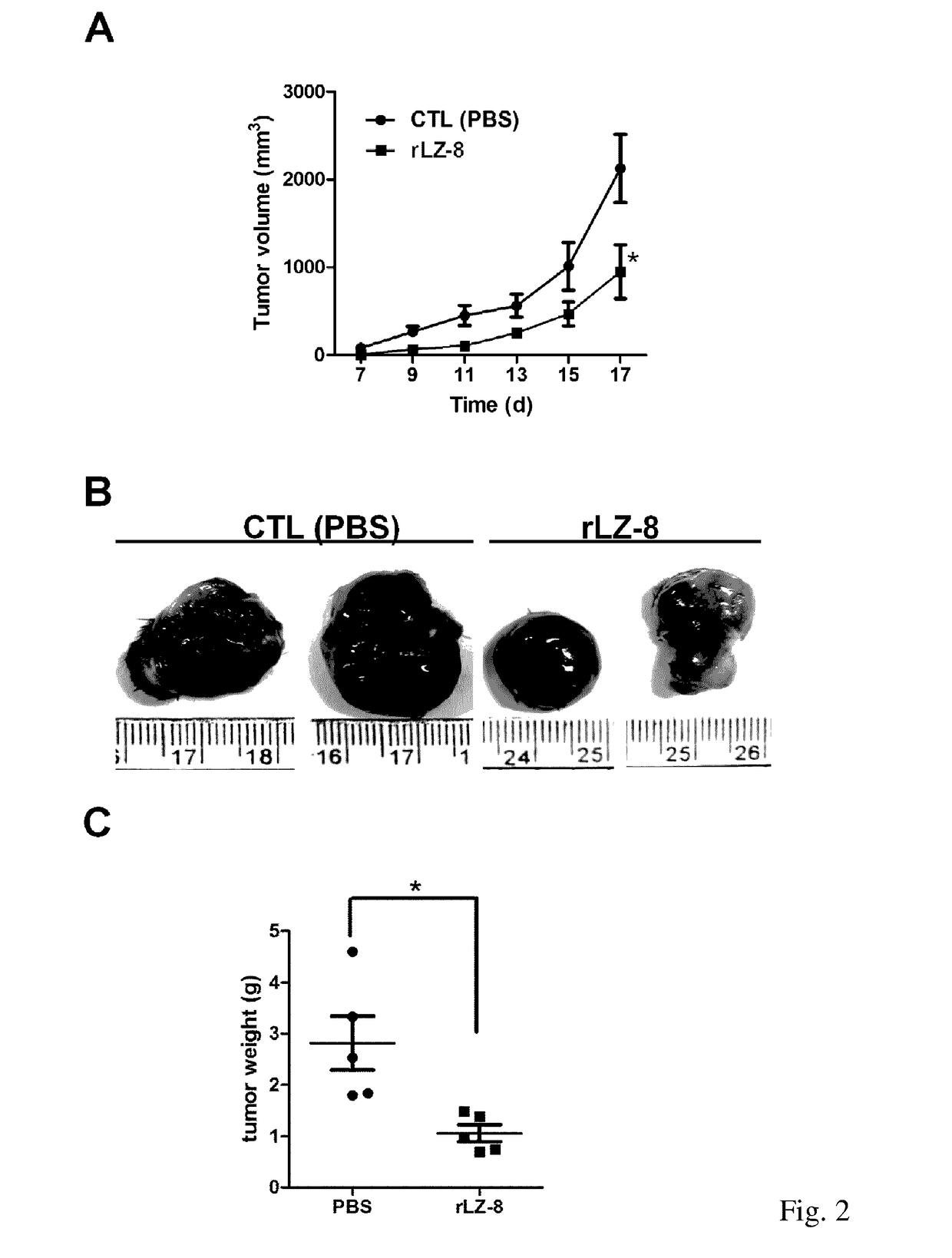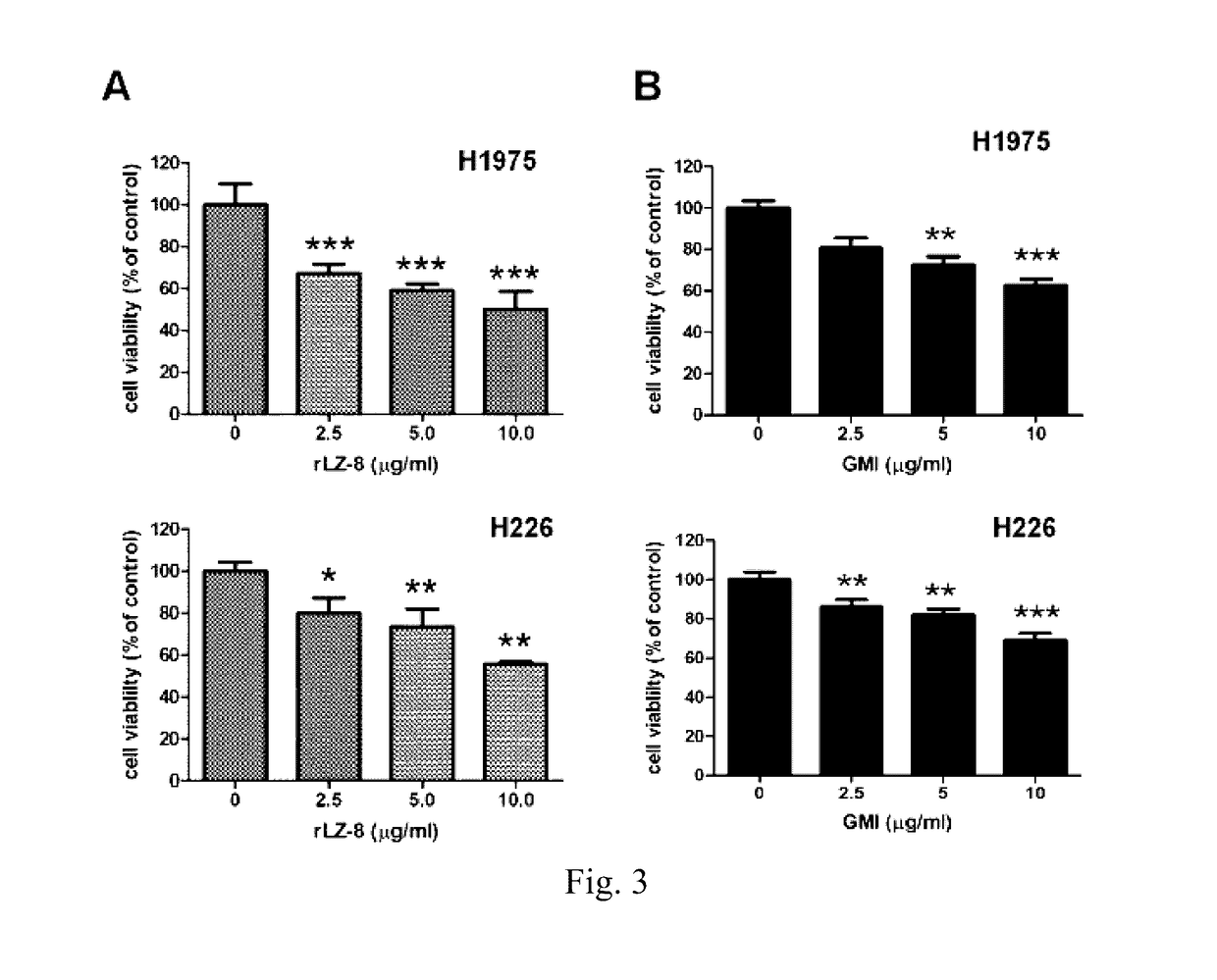Method for treating a refractory or relapsed lung cancer
a lung cancer and relapsed technology, applied in the direction of pharmaceutical active ingredients, pharmaceutical delivery mechanisms, peptide/protein ingredients, etc., can solve the problems of inducing premature cellular senescence in lung cancer cells, cell cycle arrest, and unusual long-term survival
- Summary
- Abstract
- Description
- Claims
- Application Information
AI Technical Summary
Benefits of technology
Problems solved by technology
Method used
Image
Examples
example
Example 1
Efficacy of GMI Formulation for Injection in Treatment of Tumor in LLC Allograft Mice
[0044]The recombinant immunomodulatory protein derived from Ganoderma microsporum (hereafter referred to as “recomGMI”) was manufactured by Mycomagic Biotechnology Co., Ltd., according to the method described in U.S. Pat. No. 7,601,808 and has an amino acid sequence shown in FIG. 3B of U.S. Pat. No. 7,601,808. The expression plasmid of LZ-8 gene and the purification of his-tagged rLZ-8 protein were produced as described in Hsu H Y et al., J Cell Physiol. 2008; 215:15-26. Lewis lung carcinoma cell line (LLC1) was purchased from the Bioresource Collection and Research Center (BCRC, Hsinchu, Taiwan).
[0045]Male C57BL / 6 (6-8 weeks of age) mice were subcutaneously inoculated with LLC1 cells and randomly divided into two groups. Seven days after implantation, the mice were treated with GMI (5 mg / kg) via i.p. injections at intervals of 4 days. The control group received an equal volume of sterile P...
example 2
[0048]For the 3-(4,5-dimethylthiazole-2-yl)-2,5-diphenyl tetrazolium bromide (MTT) assay, human H1975 and H226 lung cancer cells were seeded in triplicate on a 96-well plate and incubated overnight prior to treating with various concentration of rLZ-8 and GMI (0-20 μg / ml) for 72 h. After incubation, MTT dye was added and the mixture was incubated for 3 h as previous described in Wu C T et al., Carcinogenesis. 2011; 32:1890-6. The cell viabilities (% of control) of rLZ-8 and GMI are shown in FIG. 3.
example 3
LZ-8 and GMI Bind to EGFR and Induce EGFR Degradation
[0049]CL1-5 and H226 cells were incubated with rLZ-8 and GMI (5 μg / ml for CL1-5 and 10 μg / ml for H226) for 0-12 h followed by western blotting to detect expression of EGFR. As shown in FIG. 4A, rLZ-8 and GMI significantly suppressed the EGFR protein levels. The regulatory mechanisms of ligand-induced EGFR degradation dependent on endocytosis (Hicke L., FASEB J. 1997; 11:1215-26.). To investigate whether rLZ-8-induced EGFR degradation by inducing endocytosis, we preformed depletion of clathrin heavy chain experiments in NSCLC cells. Using clathrin heavy chain shRNAs such as #2755 (sh-S1), #2757 (sh-S2) and #7981 (sh-S3), we confirm the efficacy of clathrin shRNAs, and we found (via Western blot analysis) that clathrin knockdown leads to a reduction in the overall protein levels of clathrin in CL1-5 and H226 cells (FIG. 4B). Next, we examined whether the rLZ-8-induced EGFR degradation dependent on clathrin-mediated endocytosis in NS...
PUM
| Property | Measurement | Unit |
|---|---|---|
| Weight | aaaaa | aaaaa |
| Weight | aaaaa | aaaaa |
| Weight | aaaaa | aaaaa |
Abstract
Description
Claims
Application Information
 Login to View More
Login to View More - R&D
- Intellectual Property
- Life Sciences
- Materials
- Tech Scout
- Unparalleled Data Quality
- Higher Quality Content
- 60% Fewer Hallucinations
Browse by: Latest US Patents, China's latest patents, Technical Efficacy Thesaurus, Application Domain, Technology Topic, Popular Technical Reports.
© 2025 PatSnap. All rights reserved.Legal|Privacy policy|Modern Slavery Act Transparency Statement|Sitemap|About US| Contact US: help@patsnap.com



